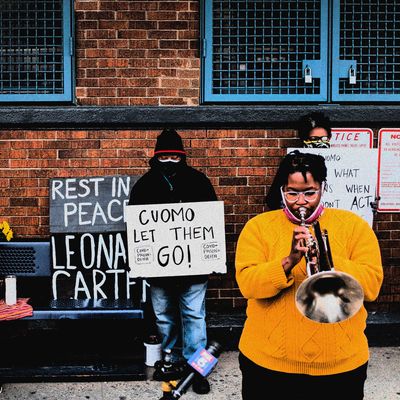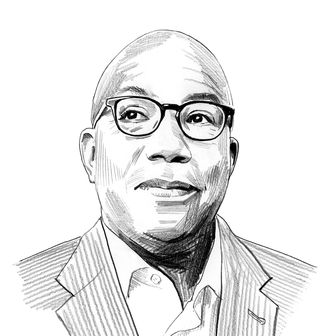
Kathy Hochul has already proved she is a determined, reasonable, no-nonsense leader as she steers New York through this second winter of the pandemic.
Competent? Yes. Tough? For sure. But is she compassionate?
Like the governors before her, Hochul has been deluged with end-of-year requests for clemency from desperate prisoners and their families. They are anxious to discover if the quality of mercy in Albany is strained or whether it will, at long last, drop like gentle rain.
Pleas for early release are a matter of life and death in the age of COVID. In the past week, two people perished at the Mohawk/Walsh prison hospice in central New York, marking a total of 39 prisoners killed by the virus while in state custody since the pandemic struck, according to the Department of Correction and Community Supervision. Fifteen DOCCS staffers have died from the disease as well.
Those numbers are certain to rise. With the arrival of the highly infectious Omicron variant, the number of positive COVID cases among state prisoners recently shot up 35 percent in a single week, according to the Release Aging People in Prison Campaign.
And decades of harsh sentencing have led to a large population of elderly people inside New York prisons, people whose age, underlying health problems, and close confinement make them especially vulnerable to the coronavirus, says activist Jose Saldana, who spent more than 30 years in state institutions and now leads RAPP.
“I did almost four decades. I’ve been through the AIDS pandemic, other outbreaks that are life threatening,” Saldana told me. “You would think that the Department of Correction would learn from these things. They don’t. No matter how many people die in prison, they just do not learn from it. There are no lessons for them. They go on as if nothing happened.”
The problem is not confined to the Department of Correction. New York, which prides itself on being progressive and caring, has long harbored a deep streak of cruelty when dealing with defendants convicted of crimes. No punishment, it seems, is too harsh for Those People.
Ours is the state where Governor Nelson Rockefeller in the 1970s abruptly forced through draconian laws that sentenced thousands of people to 15-year minimums for possessing even small amounts of narcotics. It’s where Governor Mario Cuomo embarked on a prison-building boom in the 1980s, opening more facilities than any governor in state history and adding 30,000 beds to an ever-swelling population.
In the 1990s, Governor George Pataki fulfilled a campaign promise by ending tuition assistance to incarcerated New Yorkers; the number of college programs in state institutions fell from 70 to only four. More recently, after the pandemic struck, Governor Andrew Cuomo steadfastly refused to provide vaccines to people in state jails and prisons, a decision reversed by a judge who found “no acceptable excuse for this deliberate exclusion” and bluntly ordered Cuomo to provide vaccinations.
Decades of constant punishment have taken a startling toll. Even before the pandemic, according to a recent report by the Center for Justice at Columbia University, more than 120 people have been dying in New York prisons every year — about one every three days — a rate that greatly exceeds the fatalities from the centuries when New York officially had a death penalty.
“More people have died in NY State custody in the last decade than the total number of people executed in the 364 years New York State had the death penalty,” the report notes. “1,278 people died in NY State custody in the last decade compared to 1,130 who were executed in NY State between 1608 and 1972.”
Imagine if New York held a publicized hanging or electrocution of an elderly person every three days. Perhaps we might stop loftily looking down our noses at the gleeful brutality of states like Alabama and Texas.
Most of the New Yorkers dying in custody are over 55 years old — in many cases, well past the age when they pose any threat to the public. Our prisons are turning into senior-citizen centers with bars, where sick and aging people, some of whom have genuinely turned their lives around, are dying every few days.
All of which brings us back to the decision Hochul must make. With an overall prison population that has shrunk to just over 31,000 — the lowest level since 1984 — she has sensibly announced the closure of six prisons next year, at an estimated savings of $140 million a year.
It’s time to take the next step by considering clemency applications from seniors at risk of dying from COVID. Any honest measure of compassion would be a welcome departure from the delays and double-talk of her predecessor.
“In 2015, Cuomo vowed to overhaul the clemency process by reviewing the flood of applications four times a year, as opposed to just once, and making lawyers available to prisoners wanting to apply,” The City news site recently noted. “He never followed through on any of it.”
Hochul should also get behind legislation, which failed in the last Albany session, that would allow elderly applicants to come before the state parole board on an expedited basis to make their case for freedom.
“It’s not a guarantee. That’s the whole thing that really disturbs me,” Saldana says. “We’re talking about a bill that would just get people before a parole board for an interview and the opportunity to make a case for release.”
Acknowledging that some people in prison deserve a fair shot at proving they have been rehabilitated would mark Hochul as a fundamentally different kind of governor than the men who preceded her. The kind ready to prove that true justice is seasoned with mercy.






























